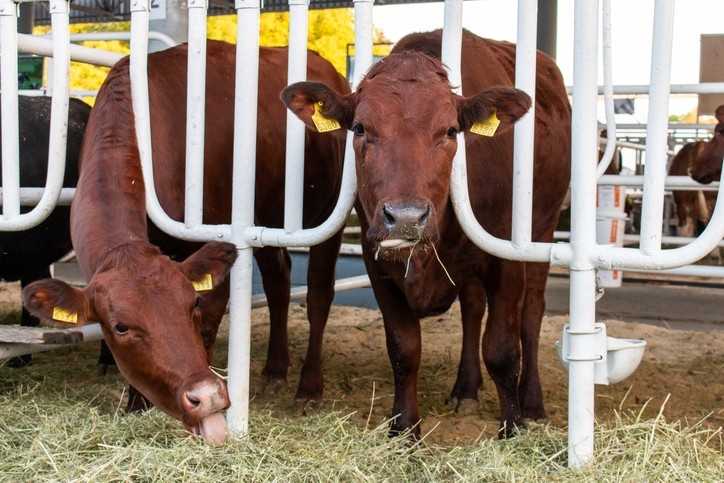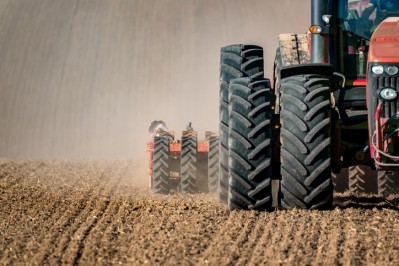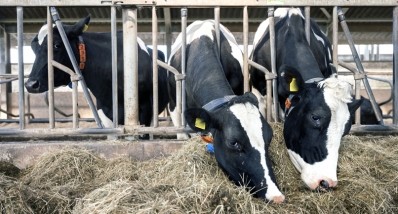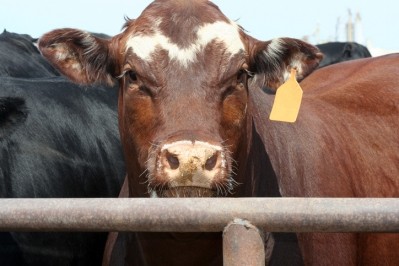US: Efficiency, production challenges drive new role for cattle grow yards

There is a shift in the US in how grow yards, which work with cattle before they are large enough to go to a feed yard, are now being used in cattle production, according to new Rabobank report.
Previously grow yards would be used for residual housing to address imbalances in the supply chain, said Don Close, report author and senior analyst with Rabobank. It was a way to address an unbalanced system between the stocker and feed yard or to feed cattle during specific seasons.
However, increasingly grow yards are becoming a collection point for cattle where they can mature physically while reaching a specific weight needed to enter a feed yard, he said.
There are two main drivers behind the new dynamic, Close told us. Feed yards are having a harder time finding labor with the knowledge and skill set to work with lighter cattle and high-risk cattle, and there have been changes to how feed yards maintain and grow cattle.
“The second driver is that as more and more feed yards have transitioned to selling cattle on a formula where they’re committing cattle to a specific time window; it has increased the need to have cattle with a known rate of gain [and] a known cost of gain,” he told FeedNavigator.
Feed yards need to have more control on cattle performance and more knowledge about how long the finishing process will take, he added.
The change in role could influence other members of the cattle production system in different ways, Close said. For cow-calf producers, the shift means there are more buyers for their calves and more competition, however, for a conventional stocker it would increase competition to buy a calf.
“For the feed yards to have the animal fully ready to gain from day one is a good thing, and to have the service provider to provide the care that light cattle need that’s a benefit,” he said. “For the beef processor, it’s a good thing.”
Lightweight cattle production challenges
Grow yards continue to be smaller than average feedlots, which can allow them more opportunities to manage smaller or high-risk cattle, said Close. High-risk cattle are those that face more stressors like long-distance travel or being part of a group collected from several locations.
Commercial feed yards can be up to 100,000 cattle, but a more typical size would be 30,000 to 50,000 cattle, he said. A “huge” grow yard could have 10,000 cattle, while more typical ones would be in the 3,000 to 5,000 range.
“It just enables that closer contact with the animals, closer observations,” he said of the smaller grow yard facilities. “Those cattle that need extra attention and extra care – that’s one of the drawbacks of handling the lightweight cattle in a commercial yard.”
Feed costs, nutrition and grow yards
In addition to managing smaller cattle, raising them at a grow yard before the transition to a feed yard could be a more cost-efficient option when feed prices increase, said Close.
“It will be more economically viable with high feed grain prices than under more affordable feed grain prices,” he added.
“Those smaller cattle have the ability use a lower energy, lower cost forage – we’re talking silage, we’re talking some kind of stover or even hay,” he said. “When feed grain prices are high, even though it could be a slower daily gain, if you leave cattle in that background facility longer using the lower cost feed so when the animal is transitioned and it’s [on a] high energy, high-density ration that animal is there for a shorter period of time.”
One of the changes that some grow yard facility have made is the type of ration used, he said. An ideal ration provides enough energy to the cattle to support growth and skeletal development, but is not “too hot,” as that could limit gain at the feed yard.
“The real skill set is to keep them on a lower starch, lower energy ration [with] more protein that enables them grow physically and [add] bone density and then go to the high starch, high energy ration once they get that body frame established to carry that excess weight,” said Close.
Previously, a complaint about cattle come from that type of facility was they were too large or too “fleshy,” which causes challenges for feed yards, he said.
“That’s radically changed,” he said. “As I see grow yards today, I see ideal condition on the cattle, they’re not too fleshy I see really good frame, I see healthy animals. As the transition has been implemented those grow yard managers have become more astute at how to keep the animal at optimal feeding conditions.”
An additional element of the shift in interest toward the use of grow yards is that it could benefit producers working with a specific production type or in tracking specific cattle, he said. “As the cattle are in a confined environment, or semi-confined environment, they have a much tighter animal idea and the ability to segregate animals with specific characteristics,” he added.
“Whatever the bells and whistles of any given set of cattle are to meet the specialty market, it assists the entire process in keeping and identifying those animals,” he said. “We can verify whatever those claims of production are.”
Developing relationships with feed yards
Although a tighter relationship between feed yards and grow yards has already started to form, there could be additional steps that would further streamline that interaction, said Close.
Potentially, a grow yard could use the same nutritionist and veterinarian as the feedlot where they sell cattle, he said. At that stage, cattle would not need to be reprocessed when reaching the feed yard.
“You could put them on a plain where the last ration they had at the grow-yard becomes the starter diet at the feed yard,” he said. “They don’t have to be acclimated to new feed.”
However, Close said, he has yet to see relationships develop to that point.
“Today when talking with the grow yard – their sweet spot is to have relationships with two to four commercial feeders,” he said. That arrangement is driven by several mindsets including that it can mean grow yard producers are more likely to find a buyer, prices will be driven by the market and allow producers to tailor the kind of cattle they raise to their intended market.
However, he added. “I think the alignment between … grow yards to specific feeders will become more tightly aligned – I think that will be driven by efficiency and economy of scale.”













